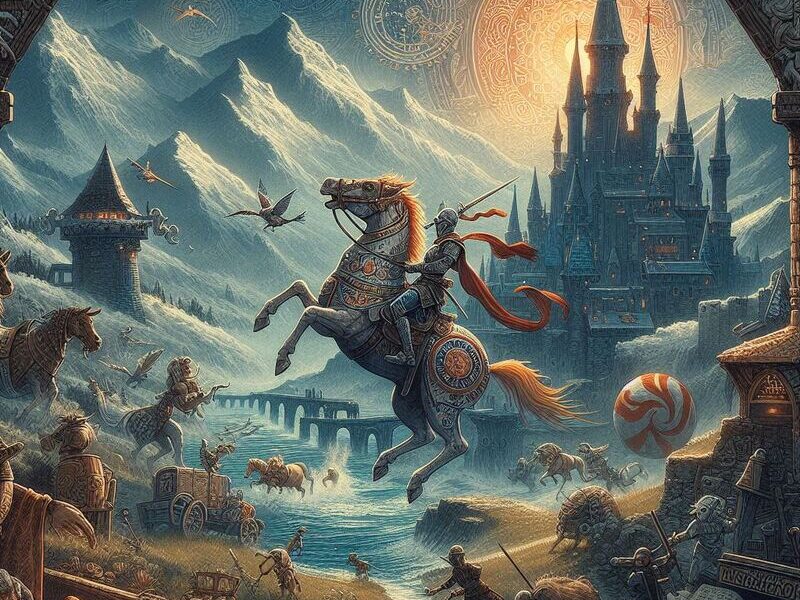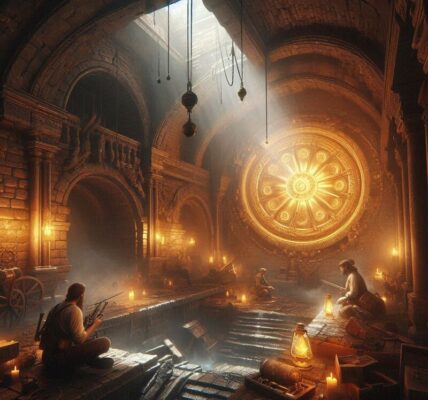The interplay between history and video gaming is a fascinating subject that merges entertainment with educational insights, allowing players to immerse themselves in the past in a uniquely engaging way. Over the years, developers have increasingly turned to historical events and epochs as the backdrop for their games, crafting experiences that are not only fun but also rich in historical context. This series, “Historical Chronicles: Unraveling Tales of the Past in Gaming,” aims to explore how these games recreate and interpret history, their impact on our understanding of the past, and the controversies they sometimes spark.
By delving into various game titles across genres—from strategy and role-playing to action-adventure—this series will provide an in-depth look at how games serve as a medium for historical narratives, the accuracy of these portrayals, and the ways developers balance fact with fiction for gameplay purposes. The discussion will also touch upon the educational potential of historical video games and how they influence both gamers and non-gamers’ perceptions of history.
Whether you are a gaming enthusiast, a history buff, or someone interested in the convergence of culture and digital entertainment, this series will offer a comprehensive overview of the dynamic relationship between gaming and historical storytelling.

Part 1: The Evolution of Historical Games
Early Beginnings and Technological Advances
Historical video games have not always been the intricate, detailed worlds we see today. In the early days of gaming, limited technology meant that historical settings were often simplistic, serving more as a backdrop than a focal point of gameplay. However, as technology progressed, so did the ability to create more complex and visually stunning historical environments. Games like “Age of Empires” and “Civilization” introduced gamers to the strategic aspects of historical timelines, allowing players to manage resources, engage in diplomatic or combat scenarios, and influence the course of history within the game.
Rise of Realism and Accuracy
The turn of the millennium saw a significant shift towards realism in video games. Developers began to invest heavily in research to ensure that the historical aspects of their games were accurate, or at least plausibly so. This era brought about titles like “Assassin’s Creed,” which intricately wove historical figures and events into the fabric of its gameplay. The series became a benchmark for how history could be integrated into video game narratives, offering a blend of historical fiction and real-world history that was both entertaining and educational.
Part 2: Crafting Historical Narratives in Games
Storytelling Techniques
In creating historical narratives, game developers employ various storytelling techniques to convey the essence of the past. This involves character development, plot pacing, and the integration of historical events in a way that feels seamless and engaging. The narrative structure must also allow for player agency—choices and actions that can influence the course of events within the game’s world—while maintaining historical coherence.
Balancing Fact and Fiction
One of the greatest challenges in developing historical games is balancing historical accuracy with the need for engaging gameplay. Developers must decide how much creative liberty to take in order to craft a compelling story that still respects historical facts. Games like “Total War: Rome II” demonstrate this balance by allowing players to engage in historically inspired campaigns that include realistic military tactics and political strategies, albeit with some deviations for the sake of gameplay.
Part 3: Iconic Historical Games and Their Impact
Games That Defined the Genre
Certain games have had profound impacts on the genre of historical gaming. “Age of Empires II,” for example, not only taught players about the Middle Ages but also ignited a passion for history in many young gamers. Similarly, “Call of Duty: World War II” offered an immersive experience of the Second World War that combined intense gameplay with a poignant reminder of the war’s brutal realities.
The Educational Value of Historical Games
These games also have significant educational value, providing a dynamic platform for learning about different cultures, eras, and events. Schools and educators have begun to recognize the potential of games as educational tools, using them to complement traditional teaching methods and engage students in a more interactive learning experience.
Part 4: Controversies and Criticisms of Historical Games
Historical Inaccuracies and Anachronisms
While many games strive for accuracy, they often face criticism for historical inaccuracies or anachronisms. These can range from minor inaccuracies in attire or architecture to major deviations in historical timelines or events. Critics argue that such inaccuracies can mislead players about the realities of history, especially younger audiences who might not distinguish between historical fact and fiction.
Representation and Sensitivity
Another area of controversy is how historical games handle sensitive subjects and representation. Games that tackle issues like colonialism, warfare, and cultural conflicts have the potential to either enlighten or offend, depending on their treatment of these themes. The portrayal of different cultures and peoples can sometimes perpetuate stereotypes or provide a skewed perspective, which is a significant concern among historians and cultural critics.
Part 5: The Future of Historical Gaming
Technological Innovations
The future of historical gaming looks promising, with advancements in technology enabling more immersive and authentic experiences. Virtual reality, in particular, holds the potential to revolutionize the way we experience historical games, allowing players to literally step into the past and interact with historical environments and figures in ways previously unimaginable.
Expanding Horizons
As the audience for historical games grows, developers are also exploring less commonly depicted eras and locales, broadening the scope of what historical games can offer. This expansion not only diversifies the gaming market but also enriches our understanding of lesser-known chapters of human history.
Conclusion: Reflecting on the Past, Shaping the Future
Historical video games play a crucial role in how we perceive and engage with the past. By offering both entertainment and education, they provide a unique window into the complexities of history, allowing us to explore detailed recreations of worlds long gone. As we have seen throughout this series, the journey of historical gaming is one of evolution and innovation, reflecting the growing desire for content that is both intellectually stimulating and profoundly engaging.
As developers continue to push the boundaries of what gaming technology can achieve, the future of historical games looks bright. These games not only promise more authentic and immersive experiences but also the opportunity to broaden our historical knowledge and empathy. In navigating the delicate balance between factual accuracy and creative storytelling, historical games challenge us to think critically about the past while enjoying the rich narratives and dynamic gameplay that make the genre so compelling.



